Non-Invasive Activation of Cervical Spinal Networks after Severe Paralysis
- PMID: 29649928
- PMCID: PMC6119225
- DOI: 10.1089/neu.2017.5461
Non-Invasive Activation of Cervical Spinal Networks after Severe Paralysis
Abstract
Paralysis of the upper extremities following cervical spinal cord injury (SCI) significantly impairs one's ability to live independently. While regaining hand function or grasping ability is considered one of the most desired functions in tetraplegics, limited therapeutic development in this direction has been demonstrated to date in humans with a high severe cervical injury. The underlying hypothesis is that after severe cervical SCI, nonfunctional sensory-motor networks within the cervical spinal cord can be transcutaneously neuromodulated to physiological states that enable and amplify voluntary control of the hand. Improved voluntary hand function occurred within a single session in every subject tested. After eight sessions of non-invasive transcutaneous stimulation, combined with training over 4 weeks, maximum voluntary hand grip forces increased by ∼325% (in the presence of stimulation) and ∼225% (when grip strength was tested without simultaneous stimulation) in chronic cervical SCI subjects (American Spinal Injury Association Impairment Scale [AIS] B, n = 3; AIS C, n = 5) 1-21 years post-injury). Maximum grip strength improved in both the left and right hands and the magnitude of increase was independent of hand dominance. We refer to the neuromodulatory method used as transcutaneous enabling motor control to emphasize that the stimulation parameters used are designed to avoid directly inducing muscular contractions, but to enable task performance according to the subject's voluntary intent. In some subjects, there were improvements in autonomic function, lower extremity motor function, and sensation below the level of the lesion. Although a neuromodulation-training effect was observed in every subject tested, further controlled and blinded studies are needed to determine the responsiveness of a larger and broader population of subjects varying in the type, severity, and years post-injury. It appears rather convincing, however, that a "central pattern generation" phenomenon as generally perceived in the lumbosacral networks in controlling stepping neuromodulator is not a critical element of spinal neuromodulation to regain function among spinal networks.
Keywords: cervical spinal cord injury; non-invasive spinal cord stimulation; tetraplegia; upper extremity rehabilitation.
Conflict of interest statement
V.R.E, Y.P.G, N.T., and PG, researchers on the study team, hold shareholder interest in NeuroRecovery Technologies and hold certain inventorship rights on intellectual property licensed by the Regents of the University of California to NeuroRecovery Technologies and its subsidiaries.
Figures

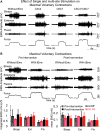
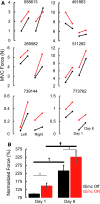
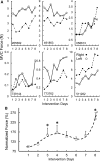

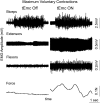

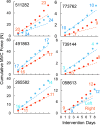
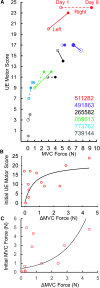
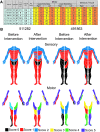
Comment in
-
Stimulating the Injured Spinal Cord: Plenty to Grasp.J Neurotrauma. 2018 Sep 15;35(18):2143-2144. doi: 10.1089/neu.2018.5993. J Neurotrauma. 2018. PMID: 30009669 No abstract available.
Similar articles
-
Combinatorial Effects of Transcutaneous Spinal Stimulation and Task-Specific Training to Enhance Hand Motor Output after Paralysis.Top Spinal Cord Inj Rehabil. 2023 Fall;29(Suppl):15-22. doi: 10.46292/sci23-00040S. Epub 2023 Nov 17. Top Spinal Cord Inj Rehabil. 2023. PMID: 38174129 Free PMC article.
-
Spinal Cord Transcutaneous Stimulation in Cervical Spinal Cord Injury: A Review Examining Upper Extremity Neuromotor Control, Recovery Mechanisms, and Future Directions.J Neurotrauma. 2024 Sep;41(17-18):2056-2074. doi: 10.1089/neu.2023.0438. Epub 2024 Jul 12. J Neurotrauma. 2024. PMID: 38874496 Review.
-
Electrical neuromodulation of the cervical spinal cord facilitates forelimb skilled function recovery in spinal cord injured rats.Exp Neurol. 2017 May;291:141-150. doi: 10.1016/j.expneurol.2017.02.006. Epub 2017 Feb 10. Exp Neurol. 2017. PMID: 28192079 Free PMC article.
-
Noninvasive Reactivation of Motor Descending Control after Paralysis.J Neurotrauma. 2015 Dec 15;32(24):1968-80. doi: 10.1089/neu.2015.4008. Epub 2015 Aug 20. J Neurotrauma. 2015. PMID: 26077679 Free PMC article.
-
Electrical Neuromodulation of the Respiratory System After Spinal Cord Injury.Mayo Clin Proc. 2017 Sep;92(9):1401-1414. doi: 10.1016/j.mayocp.2017.04.011. Epub 2017 Aug 3. Mayo Clin Proc. 2017. PMID: 28781176 Review.
Cited by
-
Motor and autonomic concomitant health improvements with neuromodulation and exercise (MACHINE) training: a randomised controlled trial in individuals with spinal cord injury.BMJ Open. 2023 Jul 14;13(7):e070544. doi: 10.1136/bmjopen-2022-070544. BMJ Open. 2023. PMID: 37451734 Free PMC article. Clinical Trial.
-
Invasive and Non-Invasive Approaches of Electrical Stimulation to Improve Physical Functioning after Spinal Cord Injury.J Clin Med. 2021 Nov 17;10(22):5356. doi: 10.3390/jcm10225356. J Clin Med. 2021. PMID: 34830637 Free PMC article. Review.
-
Recent trends in spinal trauma management and research.J Clin Orthop Trauma. 2024 Jan 27;49:102351. doi: 10.1016/j.jcot.2024.102351. eCollection 2024 Feb. J Clin Orthop Trauma. 2024. PMID: 38333744 Free PMC article. No abstract available.
-
When Spinal Neuromodulation Meets Sensorimotor Rehabilitation: Lessons Learned From Animal Models to Regain Manual Dexterity After a Spinal Cord Injury.Front Rehabil Sci. 2021 Dec 7;2:755963. doi: 10.3389/fresc.2021.755963. eCollection 2021. Front Rehabil Sci. 2021. PMID: 36188826 Free PMC article. Review.
-
Restoration of hand function with long-term paired associative stimulation after chronic incomplete tetraplegia: a case study.Spinal Cord Ser Cases. 2019 Oct 1;5:81. doi: 10.1038/s41394-019-0225-5. eCollection 2019. Spinal Cord Ser Cases. 2019. PMID: 31632739 Free PMC article.
References
-
- Bensmaia S.J. and Miller L.E. (2014). Restoring sensorimotor function through intracortical interfaces: progress and looming challenges. Nature Rev. Neurosci. 15, 313–325 - PubMed
-
- Lu D.C., Edgerton V.R., Modaber M., AuYong N., Morikawa E., Zdunowski S., Sarino M.E., Sarrafzadeh M., Nuwer M.R., Roy R.R. and Gerasimenko Y. (2016). Engaging Cervical Spinal Cord Networks to Reenable Volitional Control of Hand Function in Tetraplegic Patients. Neurorehabil. Neural Repair 30, 951–962 - PMC - PubMed
-
- Harkema S., Gerasimenko Y., Hodes J., Burdick J., Angeli C., Chen Y., Ferreira C., Willhite A., Rejc E., Grossman R.G., and Edgerton V.R. (2011). Effect of epidural stimulation of the lumbosacral spinal cord on voluntary movement, standing, and assisted stepping after motor complete paraplegia: a case study. Lancet 377, 1938–1947 - PMC - PubMed
Publication types
MeSH terms
Grants and funding
LinkOut - more resources
Full Text Sources
Other Literature Sources
Medical

